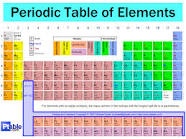Uncategorized
Other Metals
Other metals
|
other metals group is consisted of 7 elements which are located in groups 13, 14, and 15. While these elements are malleable and ductile. These elements, unlike the transition elements, do not exhibit variable oxidation states, and their valence electrons are only present in their outer shell, so they are not the same as the transition elements. All of these elements are solid, have a relatively high density, and are opaque. |
The most common or abundant element that we usually see on earth and is located in the earths crust is aluminium, aluminium is used in many different things also for example its an excellent conductor of heat and electricity, malleable and also resists rust. Gallium on the other hand is also one of the common elements but its hard to get to, because if you even try to to hold a gallium in your hand it will melt straight away.
Boiling and melting points
|
Elements |
boiling points |
melting points |
|
Aluminium |
2519 C |
660.32 C |
|
Gallium |
2204 C |
29.76 C |
|
Indium |
2072 C |
156.6 C |
|
Tin |
2602 C |
231.93 C |
|
Thallium |
1473 C |
304 C |
|
Lead |
1749 C |
327.46 C |
|
Bismuth |
1564 C |
271.3 C |
|
Ununtrium |
N/A |
N/A |
|
Ununquadium |
N/A |
N/A |
|
Ununpentium |
N/A |
N/A |
Rare Earth Metals
Rare earth metals
All of the rare earth metals are always found in group 3 of the periodic table, and the 6th and 7th periods. The Rare Earth Elements are made up of two series of elements, the Lanthanide and Actinide Series.The thirty rare earth elements are composed of the lanthanide and actinide series. One element of the lanthanide series and most of the elements in the actinide series are called trans-uranium, which means man-made.
Abundance and uses on earth:
“Rare earth” metals aren’t as rare as they sound — in fact, you’re probably using some right now. They’re key to a variety of everyday devices, from tablet computers and TVs to hybrid cars and wind turbines, so it may be encouraging to know several kinds are actually common. Cerium, for example, is the 25th most abundant element on Earth.
So why are they called “rare” earths? The name alludes to their elusive nature, since the 17 elements rarely exist in pure form. Instead, they mix diffusely with other minerals underground, making them costly to extract.
Common Properties of the Rare Earths:
-
These common properties apply to both the lanthanides and actinides.
-
The rare earths are silver, silvery-white, or gray metals.
-
The metals have a high luster, but tarnish readily in air.
-
The metals have high electrical conductivity.
-
The rare earths share many common properties. This makes them difficult to separate or even distinguish from each other.
-
There are very small differences in solubility and complex formation between the rare earths.
The Halogens
The Halogens
The halogens is the seventh group in the periodic table and it consisted of 5 non-metallic elements. The meaning of the term “halogen” means “salt-former” and compounds containing halogens are called “salts”. All halogens have 7 electrons in their outer shells, thats why the are all placed in the 7th group..
The halogens can exist , at room temperature, in all three states of matter:
-
Solid- Iodine, Astatine
-
Liquid- Bromine
-
Gas- Fluorine, Chlorine
this table shows the boiling and melting points for the halogens elements
Atomic radius:
Moving from the top to the bottom of the column in group 3 will increase the number of shells because every row has a level and as you move from a level to another level the shells and electrons increase.
Location on the periodic table:
This group is located as the second group in the periodic table because every time in the outer shell you are left with 2 electrons.
uses on earth
fluorine is one of the most used elements starting from world war 2 when the production of the atom bomb and other nuclear energy started fluorine was an important part of making these bombs.
